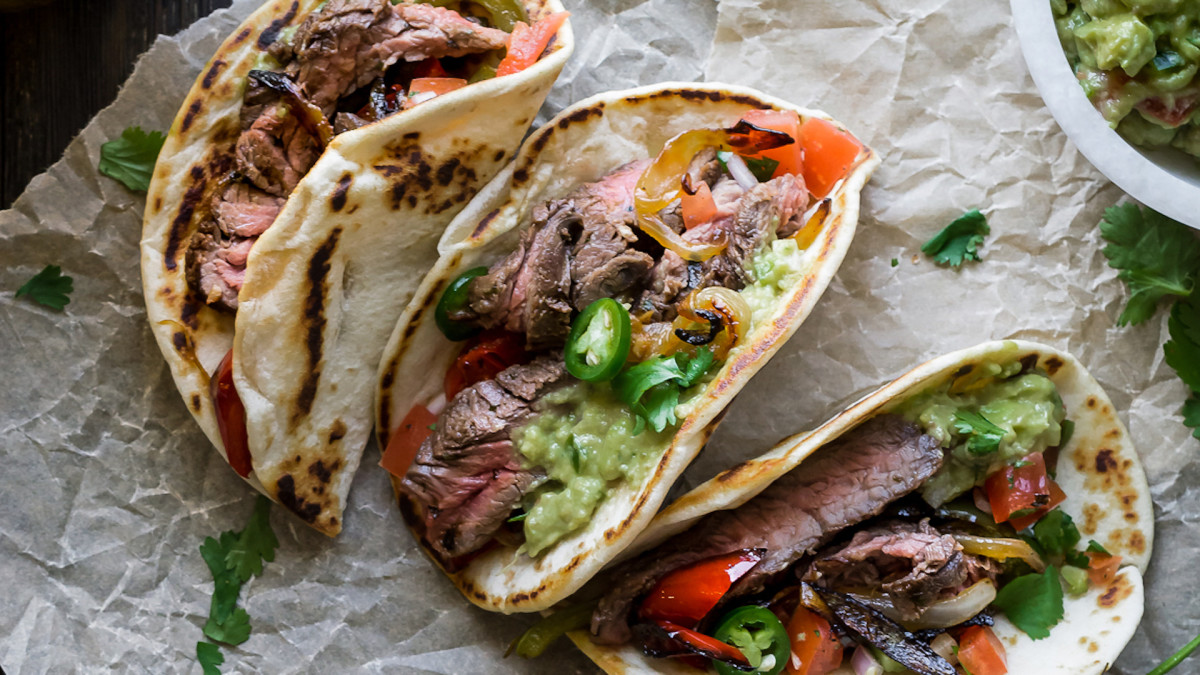
Almost everyone I know has taco night in their cooking routine, but it’s typically made with ground meat. Every once in a while you owe it to yourself to switch it up and do steak instead. I’m a native Texan who takes a lot of pride in making damn good tacos, particularly with wild game. I’m here to help you make the best, most flavorful and juicy venison steak tacos ever—because Fajita Friday should definitely be a thing.
Use The Right Cut
I can’t stress how important it is to use the right cut of meat for steak tacos. Obviously, you want to choose a tender muscle, but even then you need to narrow it down based on what type of taco you plan to make.
Fajitas and carne asada require cuts that are thin and have a long grainline. Meaning, the muscular fibers are woven into long strands in the same direction that you can visibly see. When you cut against the grainline into strips for serving, those grains become very short which results in meat that falls apart into little pieces easily and gives the mouthfeel of being “tender”. The most commonly used cuts from beef are flank and skirt steak.
When it comes to wild game, these cuts are more challenging to work with. First, it’s fully encapsulated with silverskin and every single bit of it needs to come off. Elk, moose, and Nilgai have sizable flank and skirt steak that are easy to work with, but these muscles on species like deer and pronghorn are much smaller and by the time you clean it up, there isn’t much to work with.
The solution? Use the inside (aka top) round! The inside round is a very tender, block-shaped muscle located on the inner leg of a deer with long grainlines. It’s a very thick muscle, but you can butterfly it in half lengthwise and pound it out to about an inch thick with a meat mallet to get two flat rectangular pieces that are very similar to flank and skirt steak in texture. You can also substitute a deer’s brisket, the thin flap of meat covering the rib cage, for flank and skirt steak. Again, make sure to trim it very well first. It’s worth noting that these muscles will be cooked whole before slicing, as opposed to slicing then cooking.
Now, I know what you’re thinking—what if I don’t have those cuts? You can use backstrap or sirloin, but because they’re more dense and have a shorter grainline, it’s best to cut these into small ½ inch cubes before cooking. If you cut them into strips, they won’t break apart with each bite and it'll make for quite a chewy taco.
Marinade or Rub?
Whether or not you should marinate meat or coat them in a flavorful rub before cooking is a personal choice in my opinion. Contrary to popular belief, the primary goal of a marinade is to infuse it with flavor, not tenderize it. The best taco marinades involve a lot of citrus juice, garlic, and cilantro. Reserved marinades are an excellent way to season onions and peppers that you want on the side.
I also like to use my favorite taco spice seasoning and rub it generously over the meat instead of marinating. This is ideal for weeknight cooking when you don’t have time to soak meat for 4 to 8 hours before cooking. I also like that rubs keep the meat dry, which translates to a deeper caramelization when cooking. It’s easy to squeeze fresh lime juice afterwards to boost the flavor. And of course, using a blend of spices is the smartest way to season small pieces of cubed steak.
Cook a la Plancha
When it comes to cooking, hot and fast is the way to go! In Mexican cuisine, “a la plancha” is a method of searing meat on a thin, flat metal plate set over a fire, almost like a griddle. To get a similar effect, I flash-sear my steaks in a ripping hot cast iron skillet (typically outside over a fire or grill because there’s a lot of smoke) with some rendered beef tallow for just a couple minutes on each side. You’re aiming for a good medium-rare to medium doneness.
A la plancha is my preferred way of preparing fajitas because the entire surface of the meat gets direct contact and browns beautifully. It’s also the smartest way to quickly fry up little pieces of cubed steak, and it’s easy to saute onions and peppers in the same pan for serving.
But if you don’t want to deal with a mess, you can also cook directly on a grill over high heat. Just be sure to oil the grates and meat well to prevent it from sticking.
Serving
As with any steak, be sure to let the meat rest for 8 to 10 minutes. Slice it against the grain at a 45-degree angle for wider strips, then finish with a good squeeze of fresh lime juice. Serve with the best tortillas you can find or make, quickly warmed on the hot fire, and a blend of toppings that add texture and flavor. For fajitas or carne asada, I serve with peppers and onions, Spanish rice, charro beans, pico de gallo, and guacamole. If you have cubed steak meat, you can’t go wrong with a little sour cream, shredded lettuce, and fire-roasted salsa.
Knowing how to make juicy, flavorful tacos with venison at home is very satisfying. And now that I have you drooling, you can get started on dinner plans by checking out this recipe that rivals anything you get from a restaurant.





